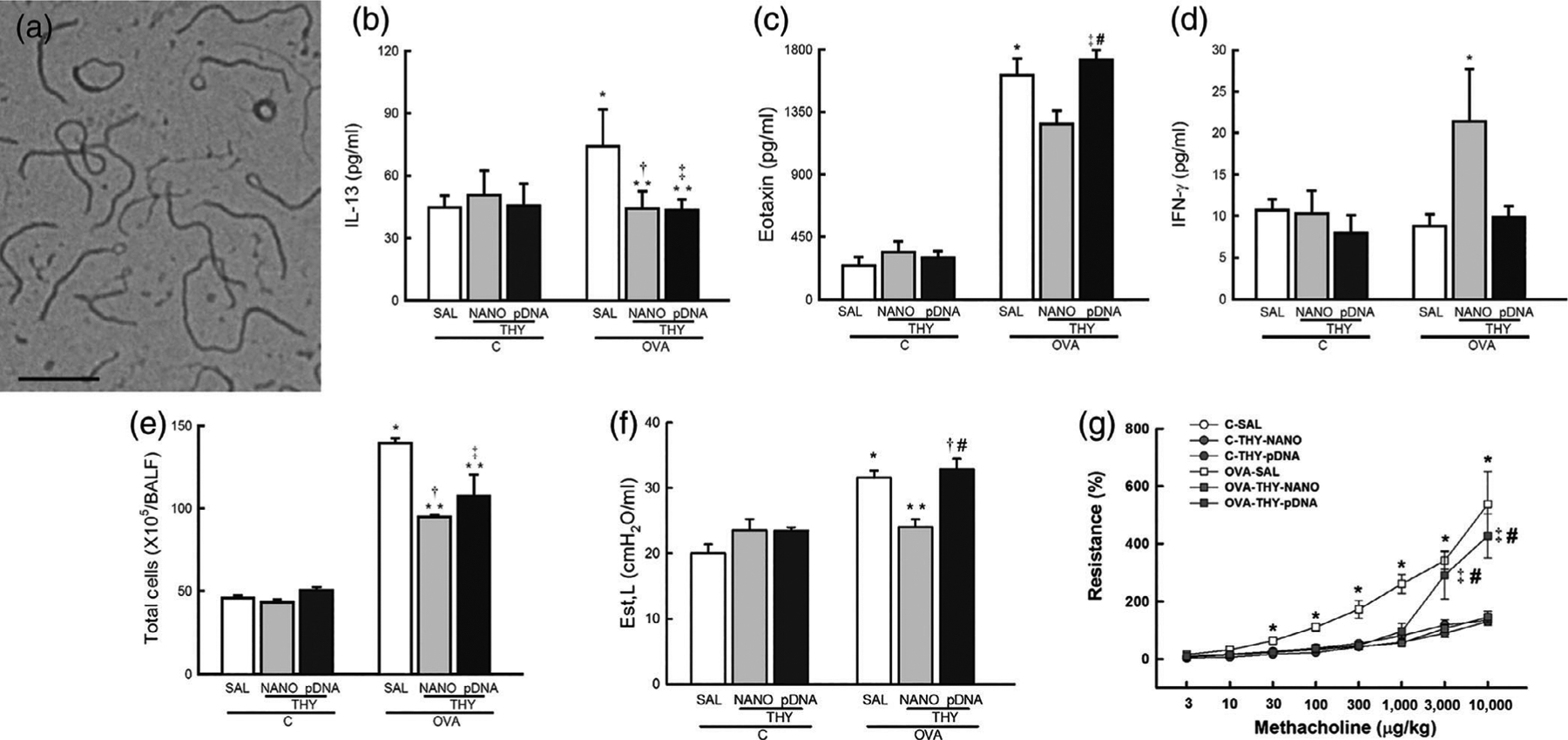FIGURE 5.

Thymulin gene therapy in allergic asthma provided via DNA-nanoparticles (NPs) that mitigate airway remodeling and inflammation after pulmonary delivery. (a) Transmission electron micrograph of the CK30PEG-MSTF NPs where scalebar represents 200 nm. Inflammatory cytokine concentrations, (b) interleukin 13 (IL-13), (c) Eotaxin, and (d) interferon-γ (IFN-γ) in lung tissues of healthy control or ovalbumin-challenged mice, highlighting anti-inflammatory effect of the DNA NPs. (e) Total number of cells counted in bronchoalveolar lavage fluid of healthy or ovalbumin-challenged mice, showing reduction of cell numbers representative of an inflammatory response after treatment with DNA NPs. Lung function of mice as represented by (f) lung static elastance and (g) airway hyper-responsiveness, highlighting reduction in elastance and resistance after treatment with DNA NPs. C, control mice challenged with saline; ovalbumin (OVA), mice challenged with ovalbumin; SAL, mice treated with saline; THY-NANO, mice treated with DNA NPs; THY-pDNA, mice treated with naked plasmid DNA. Statistically significant (p < .05) results from C-SAL (*), C-THY-NANO (†), C-THY-pDNA (‡), OVA-SAL (**), or OVA-THY-NANO (#). (Reprinted with permission from da Silva et al. (2014). Copyright 2014 Elsevier)
